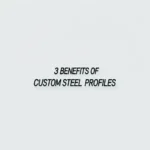“`html


What Is Carbon Steel Used For?
Carbon steel is a foundational material in industrial manufacturing, valued for its strength, versatility, and cost-effectiveness. Composed primarily of iron and carbon (typically 0.05% to 2.0% by weight), with trace elements such as manganese, silicon, and copper, carbon steel is categorized into low, medium, and high-carbon variants based on carbon content. Its mechanical properties, weldability, and machinability make it indispensable across sectors including construction, automotive, energy, and heavy machinery. This article explores the key uses, technical specifications, and best practices for selecting and working with carbon steel.
Key Insights
- Cost-Efficiency: Carbon steel is significantly more affordable than stainless or alloy steels, offering high strength-to-cost ratios for structural and mechanical applications.
- Grades and Standards: Common grades include ASTM A36 (structural), AISI 1045 (medium-carbon for shafts), and SAE 1080 (high-carbon for springs). Compliance with ASTM, AISI, and EN standards ensures material consistency.
- Heat Treatment: Medium and high-carbon steels can be quenched and tempered to achieve hardness (up to 65 HRC) and toughness, enabling use in wear-prone components.
- Corrosion Trade-Off: Lacks chromium, making it prone to oxidation. Protective coatings (e.g., galvanization, epoxy) or controlled environments are required for corrosive applications.
- Recyclability: 100% recyclable with minimal property degradation, aligning with circular economy goals.
Technical Considerations
Material Selection
Choose carbon steel grades based on mechanical requirements:
- Low-Carbon (0.05–0.25% C): High ductility and weldability (e.g., AISI 1018, 1020). Ideal for cold-forming, automotive panels, and welded structures.
- Medium-Carbon (0.30–0.60% C): Balanced strength and machinability (e.g., AISI 1045, 4140). Used for axles, gears, and forged components.
- High-Carbon (0.60–1.0%+ C): High hardness but reduced toughness (e.g., AISI 1060, 1095). Suitable for cutting tools, springs, and wear plates.
Quality Assurance
Ensure material traceability (mill test reports) and verify:
- Chemical composition (spectrometer analysis)
- Mechanical properties (tensile strength, yield strength, elongation via ASTM E8)
- Surface integrity (no cracks, laps, or scale per ASTM A6)
Pre-treat high-carbon steels with stress-relief annealing to prevent cracking during machining.
Applications
Structural and Construction
Low-carbon steel (e.g., ASTM A36) dominates in beams, columns, and rebar due to its ductility and ease of welding. High-strength low-alloy (HSLA) variants enhance load-bearing capacity in bridges and high-rises.
Automotive and Machinery
Medium-carbon steels (AISI 4140) form crankshafts, gears, and drive shafts. High-carbon steels produce precision springs and cutting dies requiring wear resistance.
Energy and Infrastructure
API 5L grade pipelines (X42–X80) transport oil/gas, while high-carbon steel rails endure heavy freight loads. Boiler tubes (SA-192) operate under high pressure/temperature.
Consumer and Industrial Goods
From hand tools (chisels, wrenches) to HVAC ductwork, carbon steel’s versatility spans mass-produced and custom-engineered products.
Conclusion
Carbon steel remains a cornerstone of industrial manufacturing, offering tailored solutions through grade selection, heat treatment, and protective strategies. By prioritizing standardized materials, rigorous quality checks, and application-specific design, engineers and procurement teams can maximize performance, safety, and ROI. As industries advance toward sustainability, carbon steel’s recyclability and adaptability ensure its continued dominance in the global supply chain.
“`
What Is Carbon Steel Used For? — This article provides a practical buyer‑focused overview with specifications, selection tips, and on‑site considerations. Explore related topics: blog.
Key Specifications and Standards
- Standards: ASTM / EN / JIS (e.g., ASTM A240/A36, EN 10088/10025, JIS G4304/G3131).
- Surface options: 2B, BA, No.4, HL, mirror; galvanized (electro / hot‑dip).
- Processing: hot‑rolled, cold‑rolled, annealed & pickled, welded or seamless.
- Typical services: slitting, shearing, cut‑to‑length, drilling, beveling, deburring.
- Documentation: MTC, CO, packing list with net/gross weight and heat numbers.
Typical Applications
Construction, machinery, automotive, energy, enclosures and fencing, food equipment (for stainless), and general fabrication. Match grade and finish to corrosion, strength, and appearance requirements.
Selection Guide
- Use certified material with Mill Test Certificate (MTC).
- Confirm standards (ASTM/EN/JIS) and tolerances per drawing.
- Match surface finish to application (2B/BA/No.4/galvanized).
- Specify dimensions and acceptable deviation upfront.
- Plan packaging and corrosion protection for transit.
Processing, Packaging and Logistics
We adopt edge protection, waterproof wrapping, rust‑inhibiting paper, fumigated pallets, and strapping suitable for sea freight. Loading photos and weight lists are provided for each shipment.
FAQs
Q: What lead time can I expect?
A: Typically 7–15 days ex‑works for standard sizes; custom processing may extend the schedule.
Q: Can you provide cut‑to‑size service?
A: Yes. We slit, shear, cut, drill, bevel and deburr to drawing to reduce waste and speed installation.
Q: How do you ensure quality?
A: Incoming inspection, process control, and final inspection with traceable heat numbers; third‑party inspection is available.
Q: Do you support small trial orders?
A: We support pilot quantities with consolidated shipping to control cost.
All values are typical and for guidance only; confirm with the datasheet and purchase order before production.
Related products: view details.
Related products: view details.




